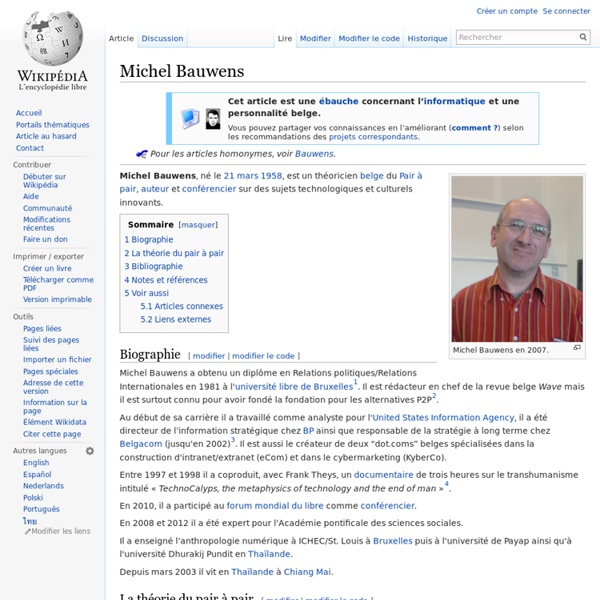Michel Bauwens

Yochai Benkler
Shop Class as Soulcraft by Matthew B. Crawford
Les élites débordées par le numérique
Gouvernants, syndicats ou lobbys traditionnels se révèlent désemparés face aux nouvelles pratiques économiques et sociales nées avec Internet. Le Monde.fr | • Mis à jour le | Par Laure Belot Septembre 2013. Qu’il y ait eu ou non manipulation des chiffres, cette mobilisation hors norme est intéressante, quand on sait qu’un rassemblement en soutien au bijoutier, organisé à Nice le 16 septembre, n’a pas réuni plus de 1 000 personnes. « On a toujours relié manifestation physique et soutien affectif, observe le PDG d’Ipsos, Jean-Marc Lech. Surtout, ce mouvement sociétal d’un nouveau type révèle que, dans leur grande majorité, les élites tombent de l’armoire numérique et ne soupçonnent pas la lame de fond sociétale qui se forme. En quinze ans, les classes dirigeantes ont compris qu’Internet a révolutionné la communication : la multiplication des tuyaux permet une diffusion rapide et mondiale de contenus plus ou moins fiables, d’idées mesurées ou radicales. Peut-on changer les choses ?
Related:
Related:



